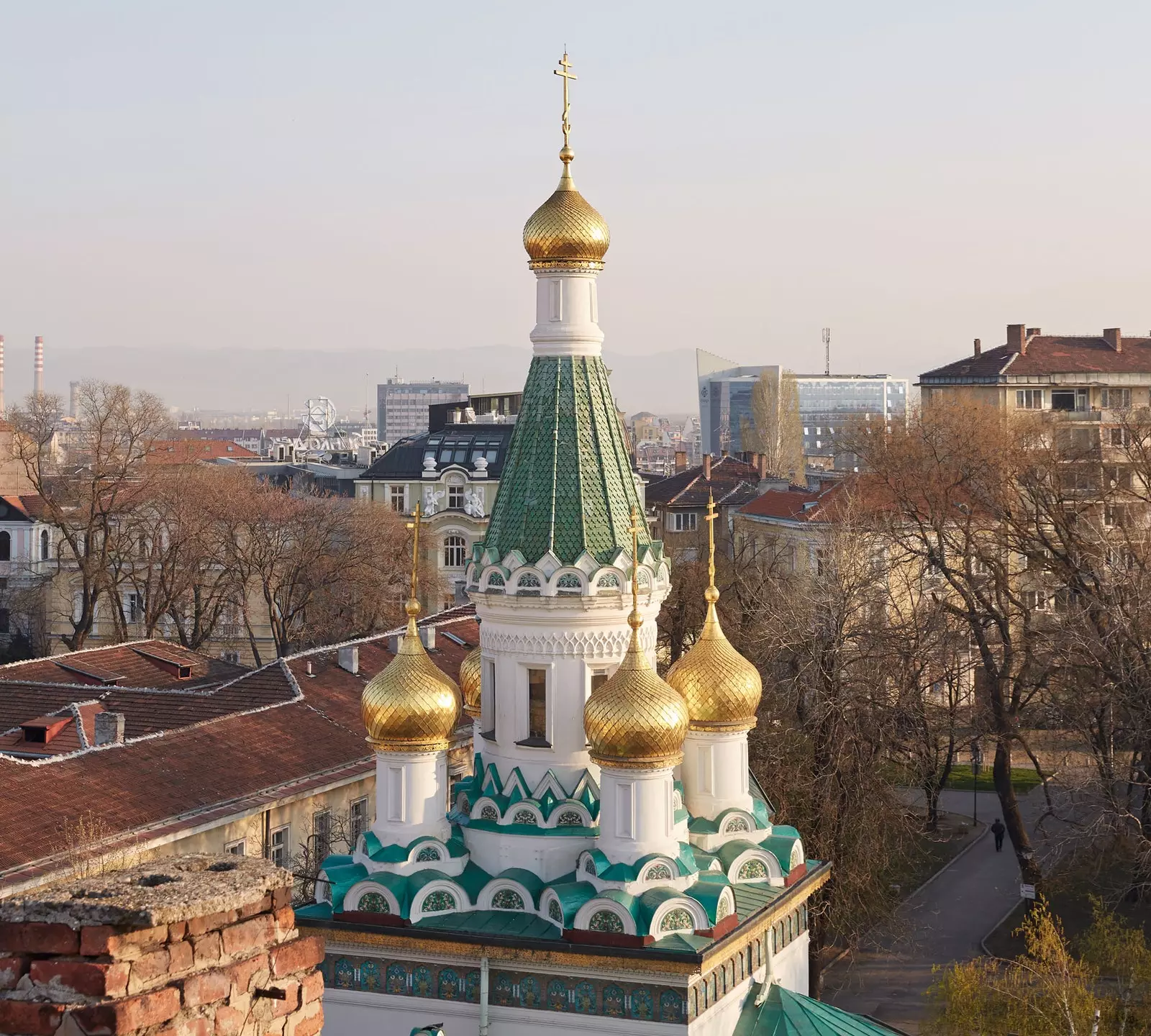
Church of Saint Nicholas 'the miraculous' or Russian Church
One of the frequent curses suffered by regular travelers is the hegemonization of a large number of destinations: the same shops, restaurants with a New York spirit and identical hotels in different corners of the world are calming for some... but the opposite for others.
**Sofia is a good antidote for those who yearn to escape that feeling.** Cyrillic helps, of course, but so does waking up in a majestic 1950s building like the one that houses the **Balkan**.
The best hotel in the city is located right next to the Presidential Palace and is a decadent fantasy of marble columns, armchairs and velvet curtains, golden lamps and faucets and very long antique rugs.
Staying in it is a priceless experience, although the service, we warn, is something Soviet: here there are no excessive finesse in the treatment, which in these lands, it seems, are not guaranteed by the stars.
Perhaps it is a matter of the language barrier, let us not forget that in Bulgaria they say 'yes' and 'no' shaking their heads 'upside down' than in the rest of the world...
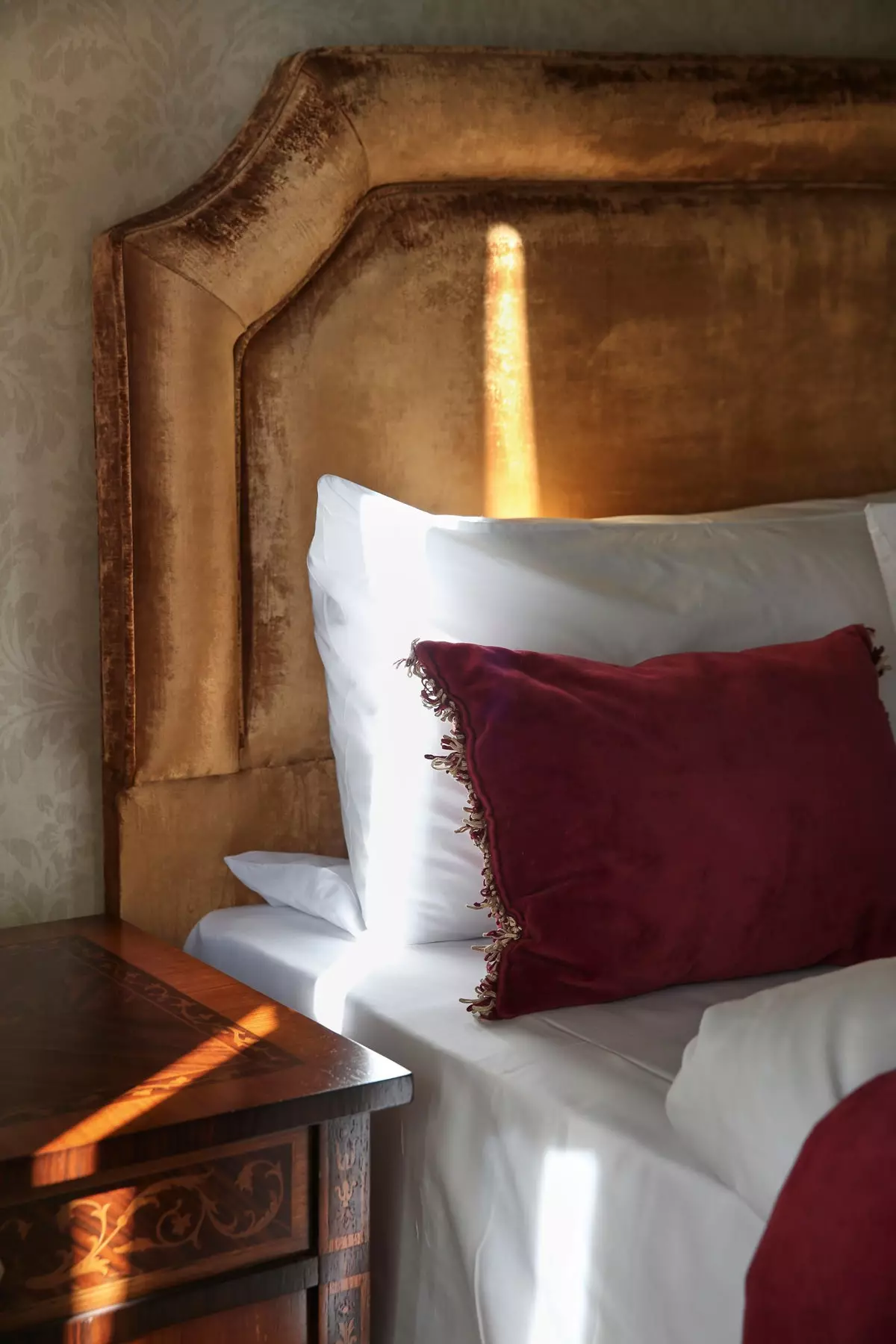
Headboard in one of the Balkan hotel suites
captivates us its restaurant decorated in the Great Gatsby style –small casino included– and we go through some of the 165 rooms and 20 silent suites with Tsvetelina Boycheva, director of marketing in a soft manner who also shows us the enormous event rooms that this emblematic accommodation hides.
It is she who mentions the adjacent church of Sveti Georgi , commenting with some nonchalance that it is one of the most popular in Sofia for a relic of a headless saint's body.
We admit that this macabre lure makes us carefully explore this temple founded in the fourth century that later became a mosque in the s. XVI , during the Ottoman occupation.
We observe the frescoes inside, the Pantocrator of the dome, the Orthodox priest serving the faithful... but no sign of a headless body.
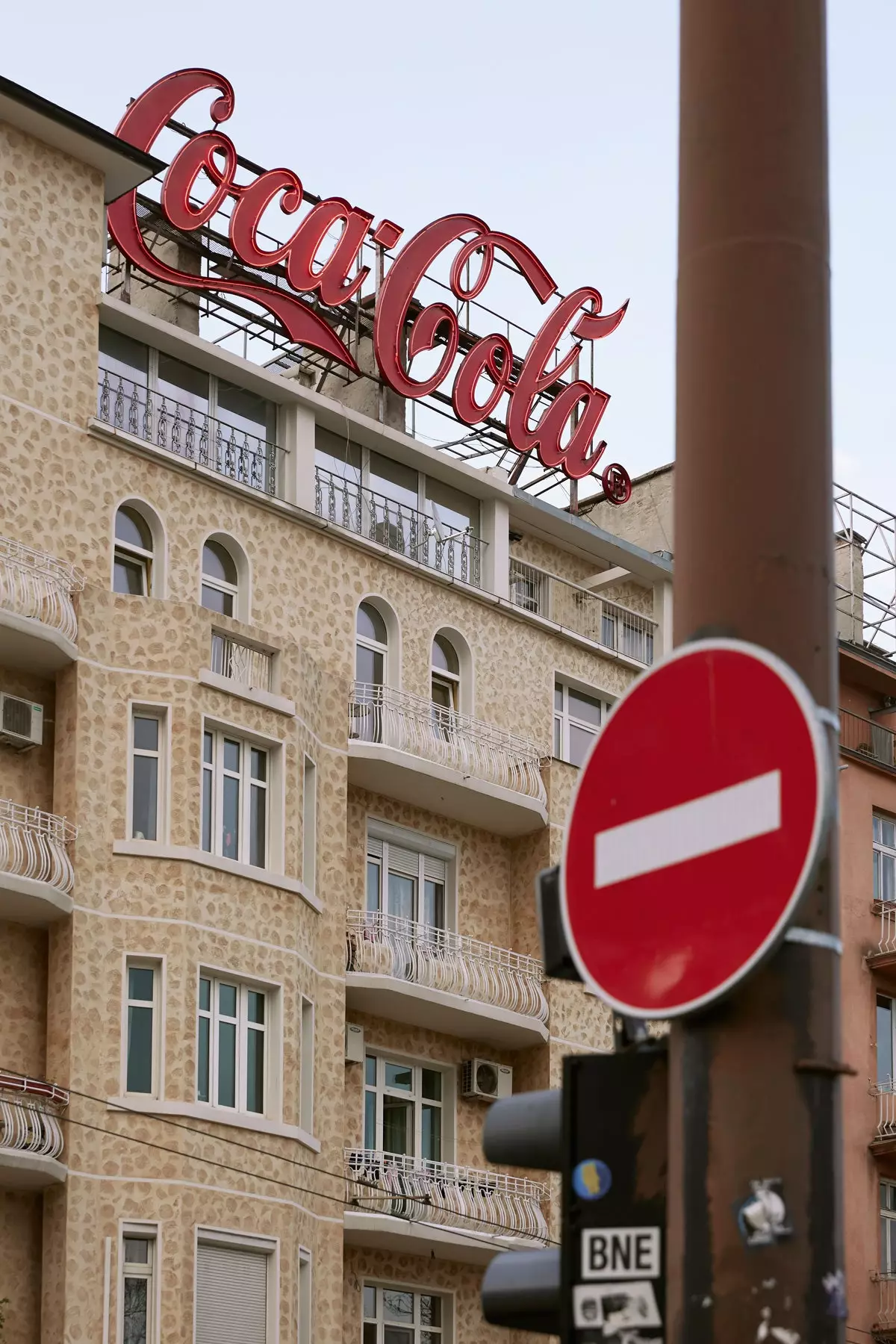
Sign near the National Palace of Culture
The tram cables and their old wagons mark the character of the surrounding streets , a succession of austere facades, picturesque old signs and clothing stores with window displays that are oblivious to trends (at least those of 2019) .
Buildings of socialist classicism such as the so-called Largo, built in the 1950s, and former headquarters of the now-defunct Bulgarian Communist Party , offer us a Spartan landscape not so usual for the traveler.
And suddenly, the opposite extreme: architectural jewels with lavish imperial echoes , a prize for those visitors eager for picturesque postcards.
It is the case of the Russian Church, erected on a mosque after shelving the Russians to the Ottoman Empire. consecrated to St nicolas –saint of the reigning tsar at the time, the timid and ill-fated Nicholas II–, presents five beautiful cupolas lined with gold.
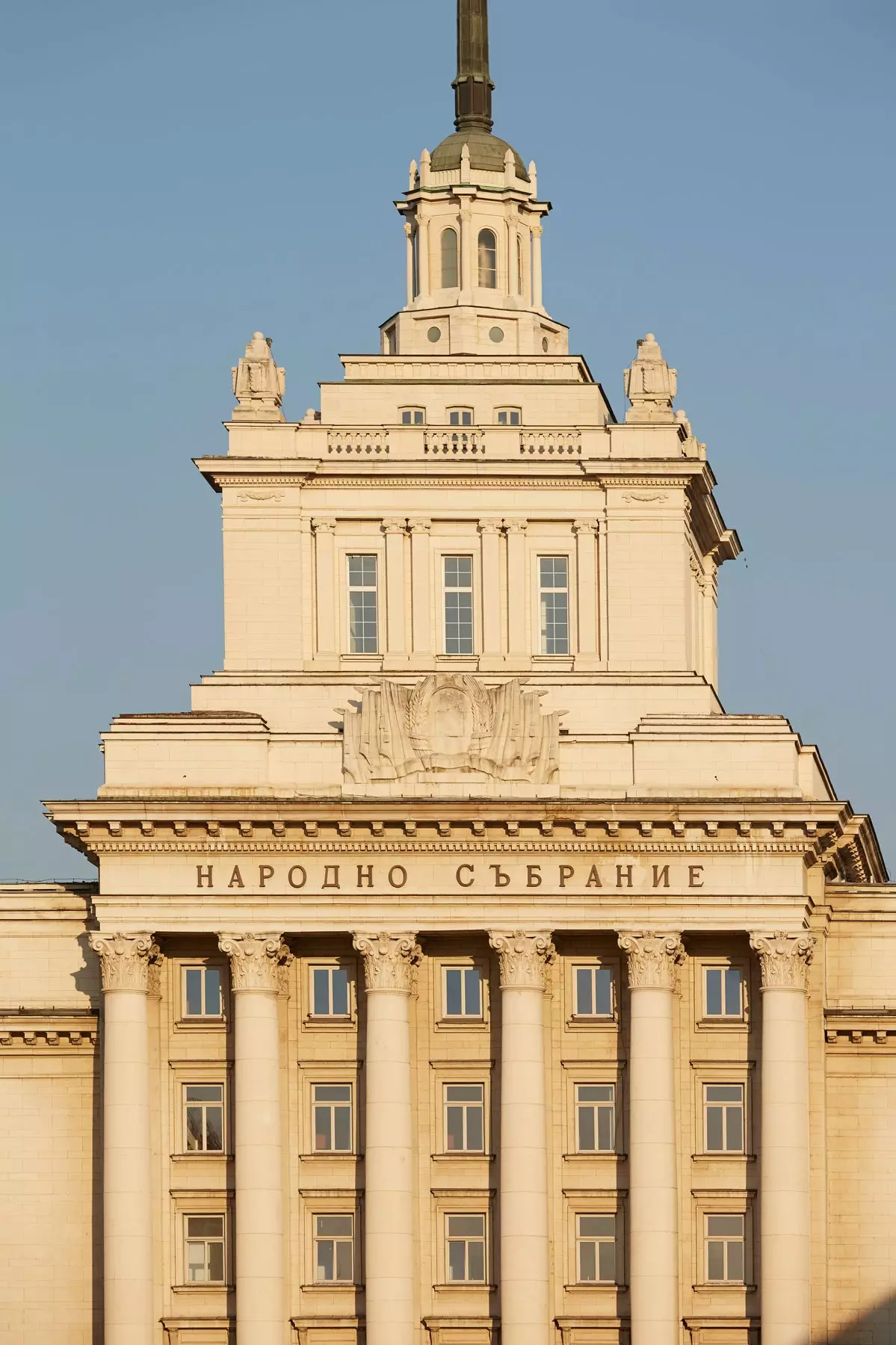
The iconic Largo, former headquarters of the Bulgarian Communist Party
However, the main attraction of the city is the imposing Aleksander Nevsky Cathedral , a structure of more than three thousand square meters that began to rise at the beginning of the 20th century with donations from the Bulgarian people.
The purpose of this Orthodox temple was honor the soldiers – Russians and Bulgarians – who died at the hands of the Turks at the end of the s. XIX.
Both on the facade and inside, the recollection is framed by faces of saints which, strikingly, please the current aesthetic taste.
Nearby, resound the flea markets full of pieces from the communist era , street music and the tourist bustle.
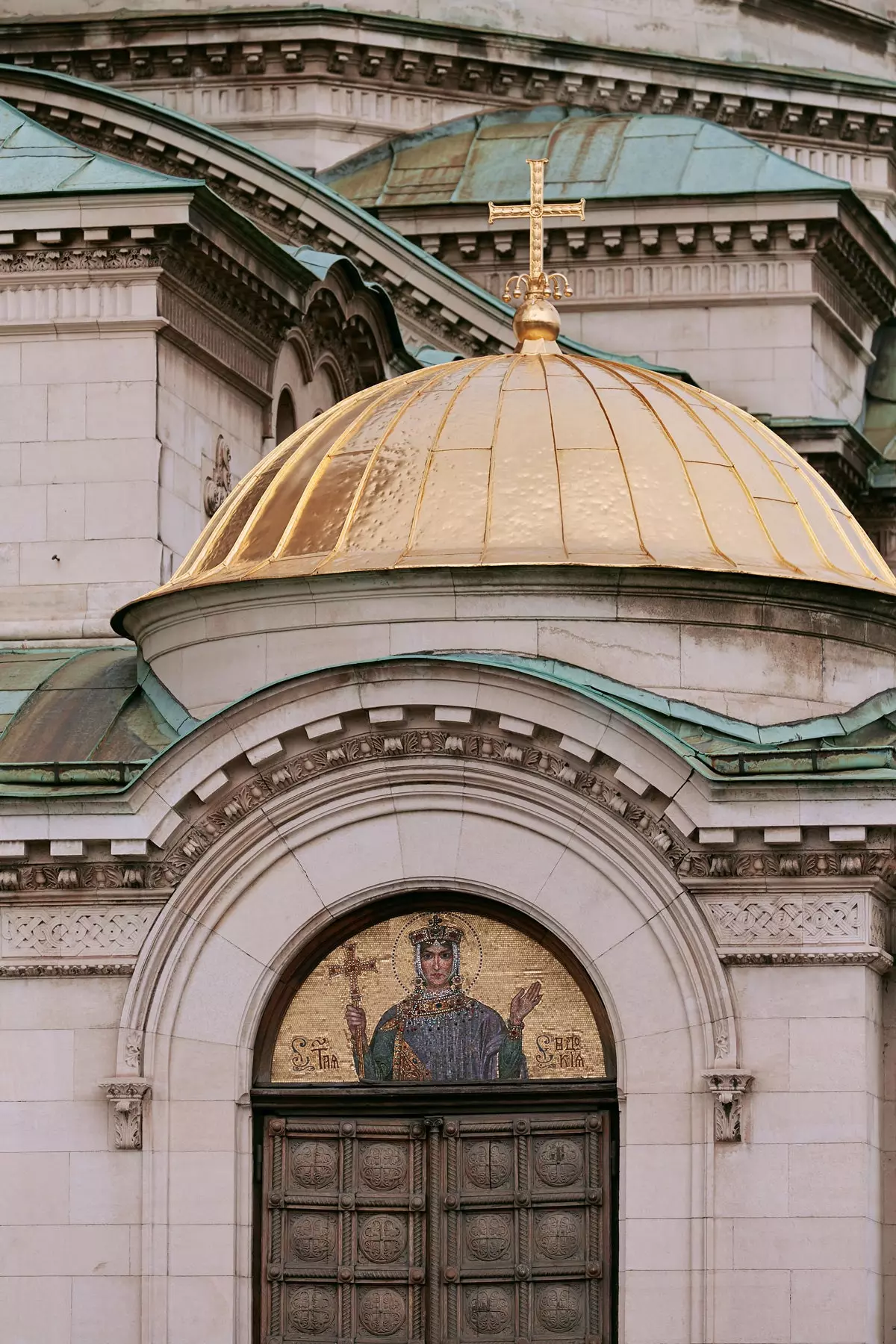
Facade of the Saint Alexander Nevsky Orthodox Cathedral
The grumpy taxi driver who takes us through the streets of Sofia mutters in English – “Do you want to go to the Museum of Socialist Art? Now there is no socialism, but there is corruption, everything is banks, banks, banks” – And he parks his beat-up car next to this original and somewhat precarious space that opened in 2011.
There are no queues here, but yes a wonderful garden with more than 70 sculptures which record that Bulgaria was a Socialist State between 1946 and 1990.
The propaganda posters of the Balkan country delight any designer and the modest souvenir shop those of the collector of memorabilia, which can be done with memories of former leader Todor Zhivkov, among other little gems.
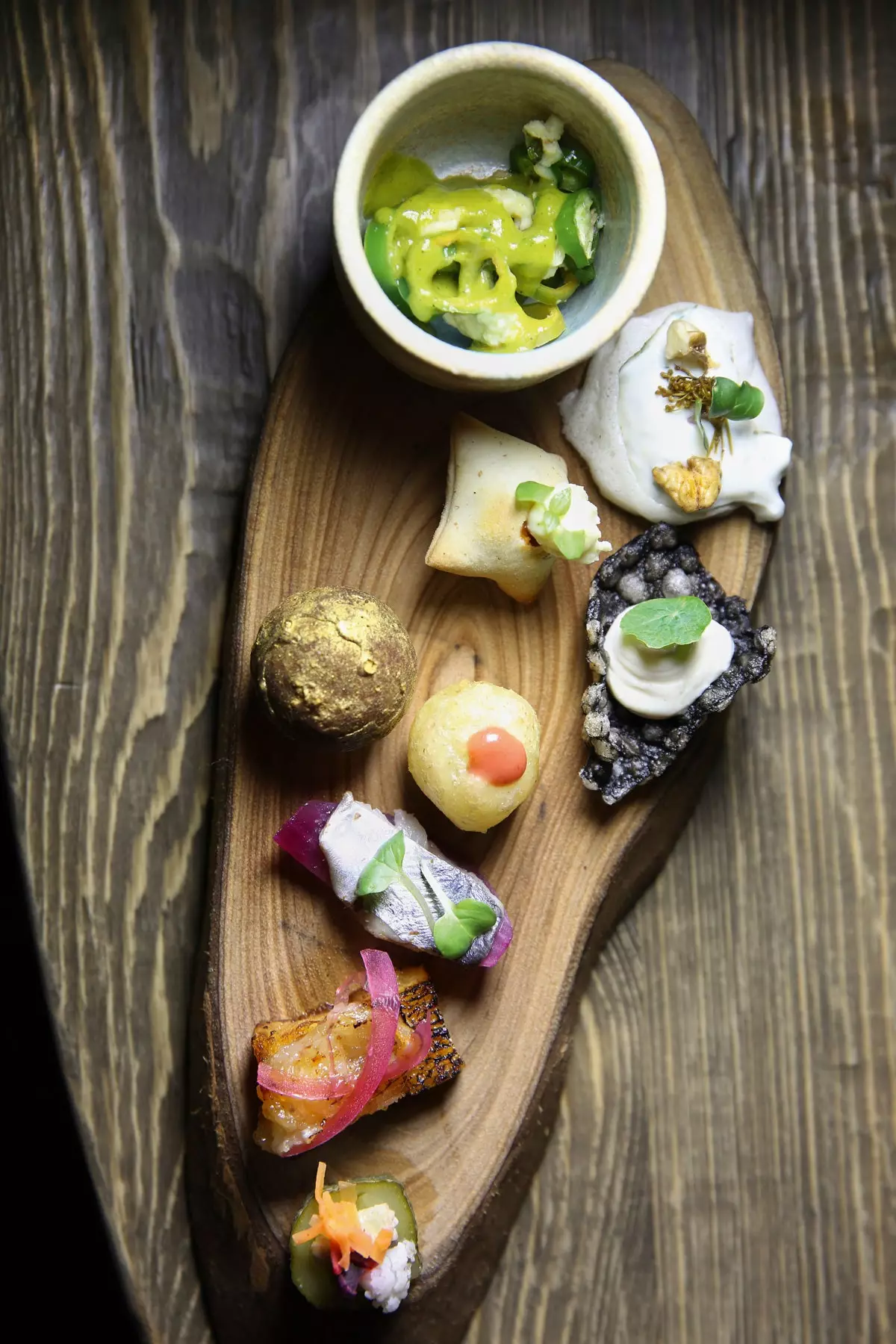
Starters at Karmare restaurant
To make it easier for us to look ahead, we chatted with curator Viktoria Draganova , at the head of an attractive contemporary art space for four years now, swimming pool , which, as her name indicates, It has been articulated around a private urban swimming pool.
“We wanted to create a scenario where we could invite curators and creators of other nationalities and create a dialogue. Right now I am working with Bulgarians who live outside the country”, tells us this 38-year-old Sofia who has always lived with one foot in Germany.
“I am interested in topics like the modernization of discourses or the relationship between art and politics ”, She adds, and to cultivate these ideas she organizes different types of events, from exhibitions to the use to informal evenings on the terrace or concerts”.
Beyond the (classic and predictable) financing problems, Viktoria highlights the proliferation of interesting art galleries in the city, such as The Water Tower, Structure Gallery and Aether Art Space , which are added as points of interest to other official ones, such as ** Sofia City Art Gallery **, configuring an attractive cultural panorama for the visitor.
“This is an easy city, it has good restaurants and bars, museums, very authentic places from the 70's... and the young people are very nice They're not as stressed as they are in London or New York,” she jokes.
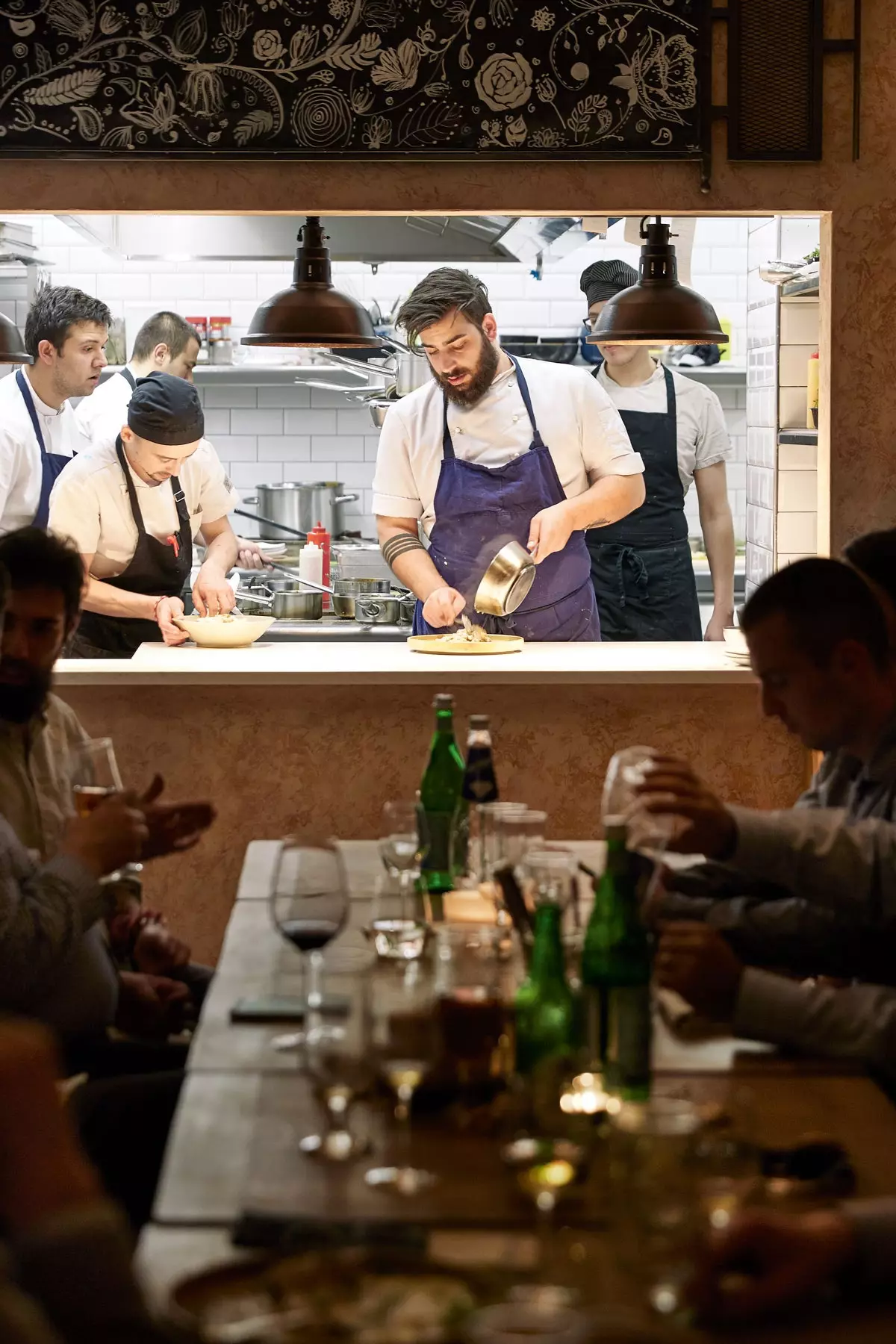
The chef of the Bistrello restaurant
Thanks to Viktoria we meet one of these unstressed youngsters in the Institute of Contemporary Art (ICA-Sofia) . Is about Vlad Nanca, an artist who has 'created' a work from an old vacuum cleaner.
Also to Ivan Moudov, who invites us to the opening of his exhibition Periodo , an exhibition that will continue “until the artist is tired of making dots with a marker on a canvas hanging on one of the gallery walls”.
Every afternoon the public can witness how Moudov fills in the painting and in this way appreciate what they could be kind of subconscious patterns.
Other creators will be added to this dynamic sample. "Every week it changes, it's about making the space unrecognizable to the viewer" , they tell us, and underline the undeniably fun moment that the art scene is experiencing here.
Stefania Batoeva paints at the opposite end of the space, and other names will be added such as Ciprian Mureşan, Maria Lindberg, Mina Minov, Evgeni Batoev, Pravdoliub Ivanov...
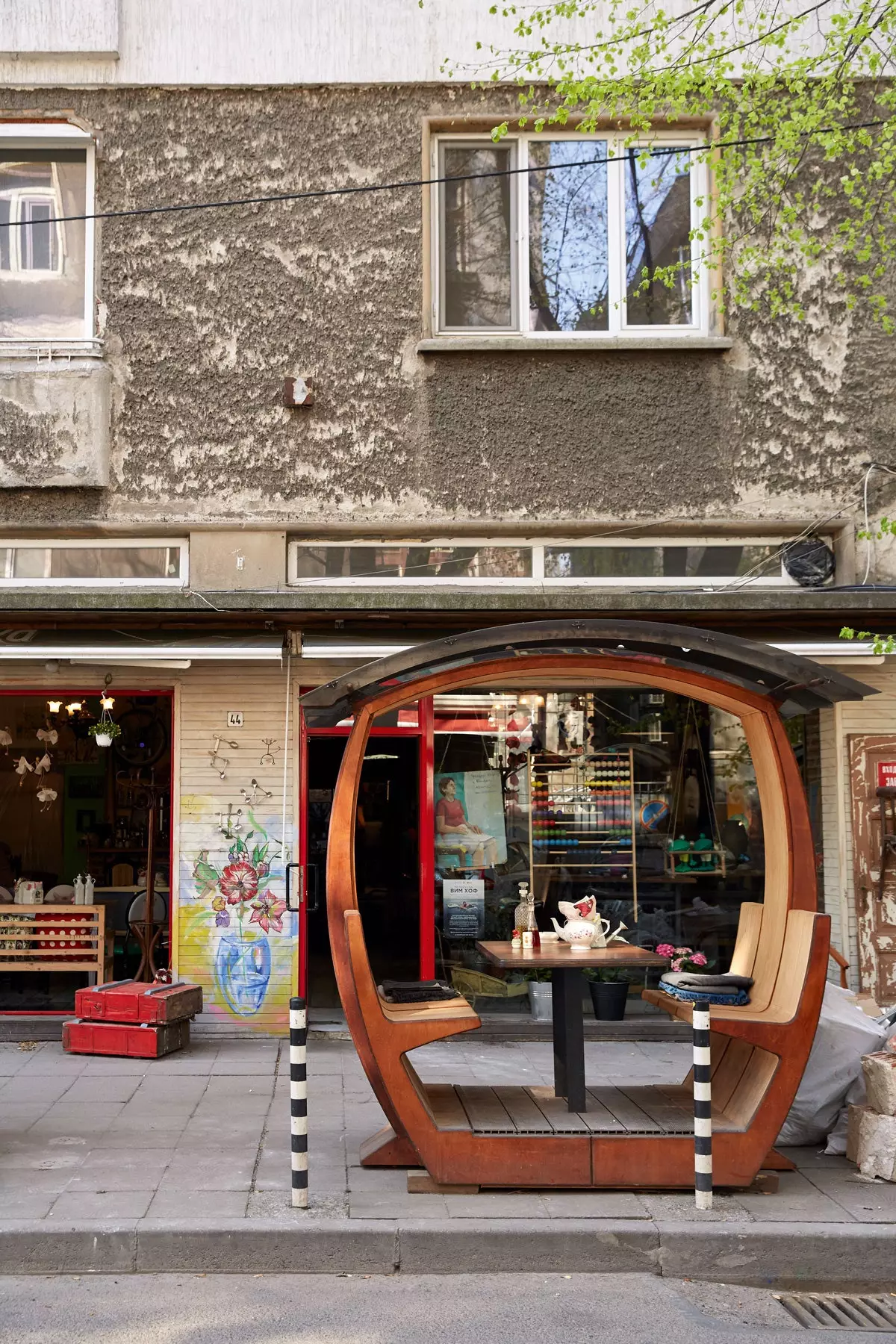
Cafe Buffet Terrace (Ekzarh Yosif 44)
In one of the oldest neighborhoods in the city – known as the Jewish quarter, although this has no historical basis at all – we discovered the work of fashion designer Elena Neicheva and illustrator Nikoleta Nosovska , who makes drawings of traditional Bulgarian costumes.
Together they have created the Artelie concept store, which has just opened its doors in this emerging area , and from there they try to revalue the Bulgarian essence while modernizing it.
This is exactly the spirit of the restaurant ** Karmare , a small space full of energy** – specifically that of its owner, the enthusiastic chef Georgi Boykovski, 36 years old – where we start to get an idea of what is cooking in Bulgaria .
The place, in a 1933 building very close to the Palace of Justice , it has exposed brick walls decorated with shevitza (a traditional Bulgarian embroidery), industrial interior design and wooden tables.
sounds in the background a mix of trap, hip hop and traditional Bulgarian music which is made up especially for them.
It has only been open for two months when we have the pleasure of visiting its kitchens and they are already fully booked. While they serve us a delicious cucumber salad with yogurt sauce, homemade gypsy bread soaked in oil with paprika or cheese with fermented strawberry ketchup, Boykovski tells us that his passion for recovering the country's cuisine comes from Spain, where he has lived for 15 years.
He went to university in San Pol de Mar and also trained at l' Espai Sucre, where he became head chef. Later he was a pastry chef at DiverXO and we can attest: he is exceptional.
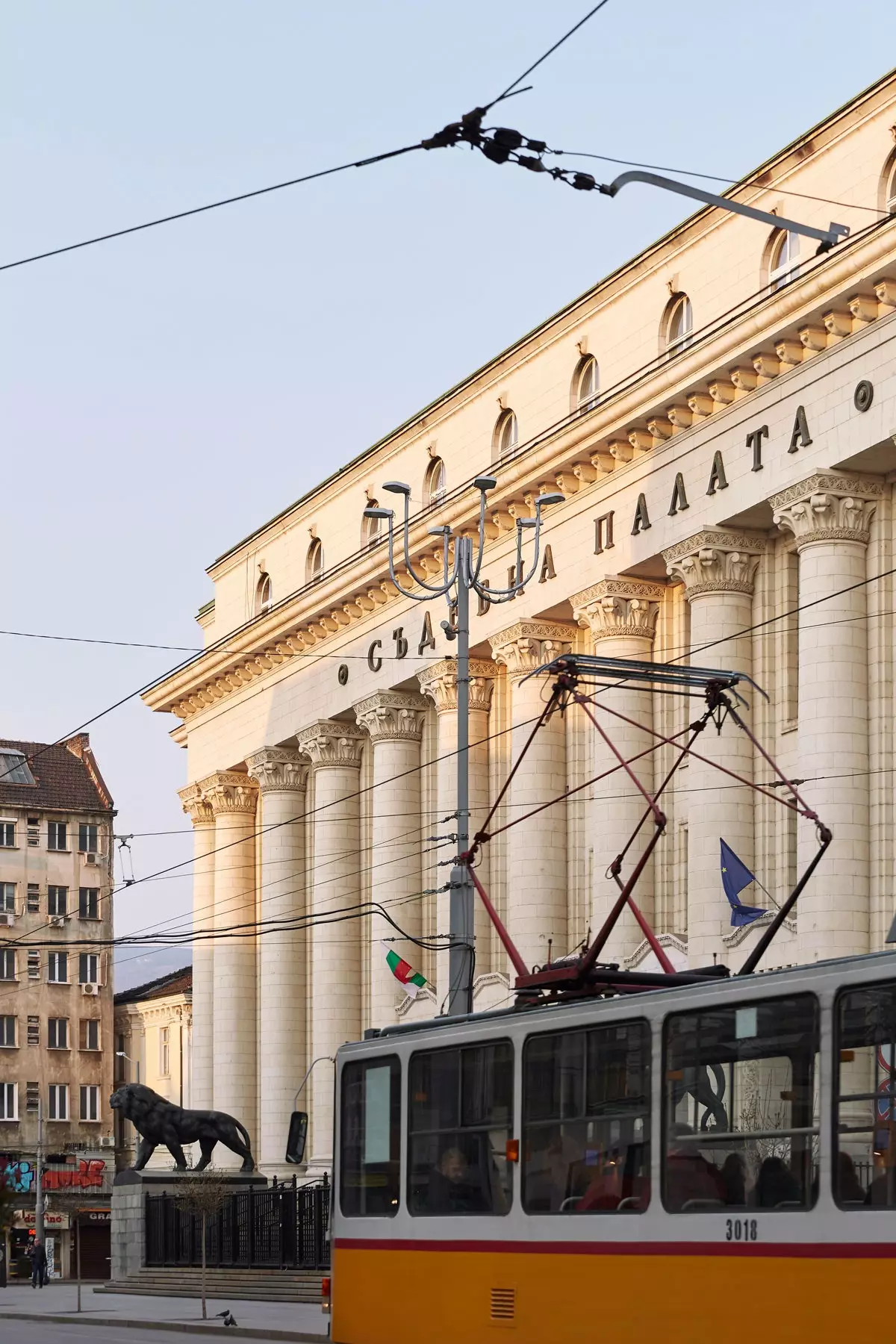
Palace of Justice facade
“In Spain there is a great philosophy, there I learned the importance of valuing the products of each region. I think that is the most important thing, because the technique can be learned everywhere. But there, just like in Italy, they know how to draw attention to their raw materials. Here it is complicated, everything is corrupted. Yogurt, which is one of our strengths, is not yogurt anymore," says Boykovski.
"We are betting on a moldy cheese that is prohibited, a fermentation of four-year-old sheep's milk that has some 900 million bacteria. It is a wonderful, living product that could end hunger in the world, but they put restrictions on it due to the expiration date, nobody protects it” he continues.
Boykovski was head chef at Cosmos, a restaurant that is ten minutes from his and with which he shares passion and concept. “When I came back from Spain five years ago, nobody made Bulgarian cuisine, there was a lot of contempt for the local gastronomy. People just wanted pizzas and salads. Without Cosmos, which has dared to make four closed menus, something very risky for our mentality, Karmare would not have been possible”.
The experience of dining at Cosmos has a spectacular component that is very reminiscent of Dabiz Muñoz, of whom they declare themselves to be ardent admirers. his manager, Atanas Balev, confesses that they love DiverXO and its "very funky" concept, and we toast to it with Mabrut, a delicious local wine.
They even have an art director, Aleksander Tsekoff, who sets fire to the ground as he passes and performs other curious interventions such as injecting champagne into a strawberry with a syringe, an idea inspired by the Madrilenian Coque.
Karmare and Cosmos are the spearhead of a gastronomic scene that is waking up and that offers super-competitive prices: a Bulgarian lev is equivalent to 50 euro cents, and the menus in these restaurants do not exceed €60.
Near them we find ** Bistrello **, a charming place where Vladimir Todorov , 25 years old and winner of the Best Bulgarian Chef in 2016, prepares fusion recipes. Here, as in the others, it seems that more tourists reserve a table than locals, perhaps more expectant, at least for now, to savor a renewed freedom that emphasizes the Bulgarian character. We are anxious.
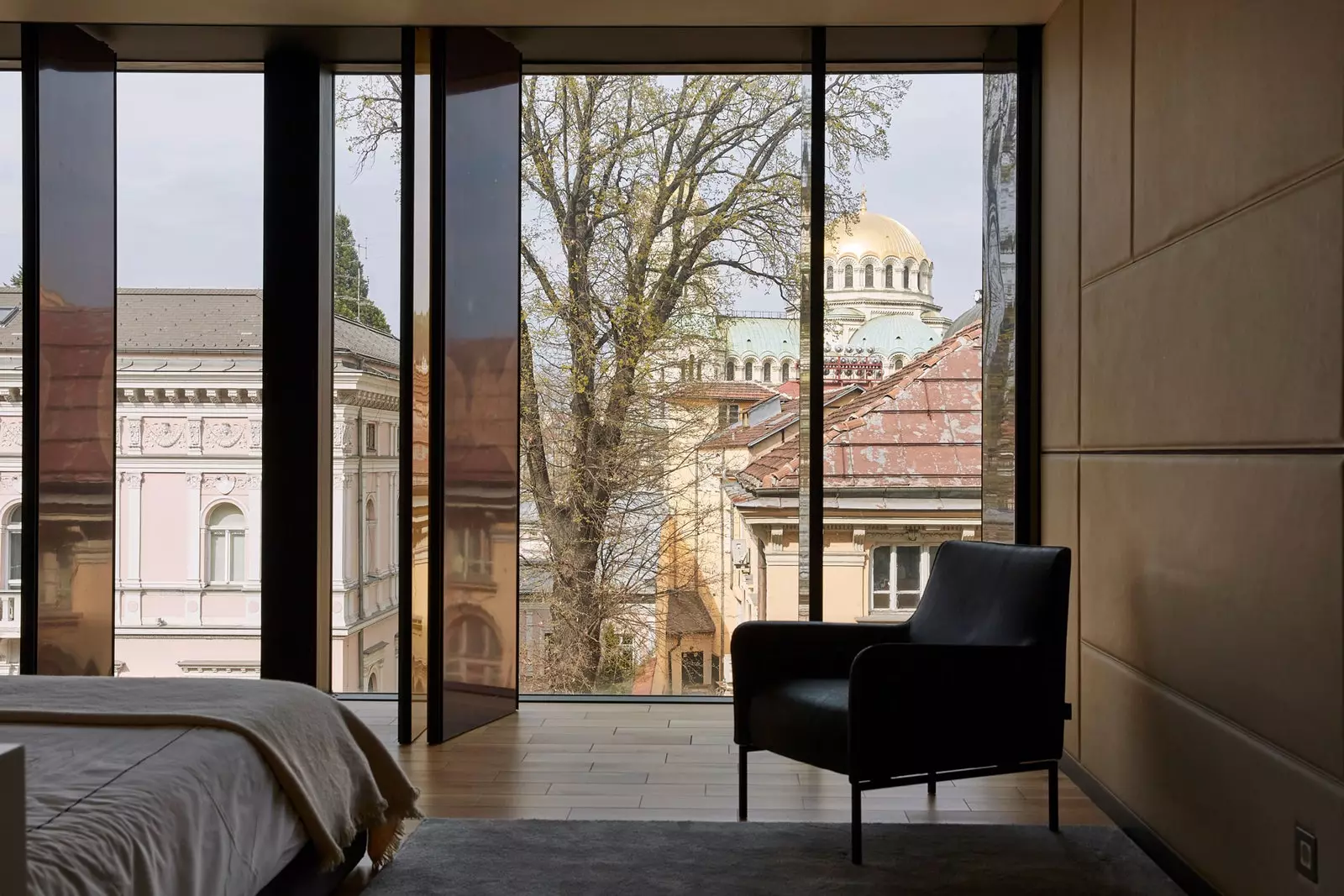
View from a suite at the Sense hotel
JOURNEY NOTEBOOK
WHERE TO SLEEP
Balkan Sofia, a Luxury Collection Hotel (Sveta Nedelya Square, 5, from €69). The most emblematic hotel in the Bulgarian capital belongs to the Marriott group and, of course, has an unbeatable location, lots of character and details such as Byredo signature amenities in the suites.
Sense Hotel (Blv. Tsar Osvoboditel, 16, from €103). A member of Design Hotels and Marriott, he is only six years old and boasts of being the only boutique hotel in the city. Its restaurant is very nice and the rooftop, crowded at peak times (also during breakfast), is the sophisticated space that one would expect to find in a hotel like this.
WHERE TO EAT
Cosmos (Lavele, 19). Its "traditional space cuisine" will put you in orbit. Try yes or yes your shopska salad with tomato, pepper, cucumber and cow and goat cheese and, for dessert, vanilla sponge cake with yogurt ice cream, strawberry and rose sorbet and rose meringue. And let yourself be carried away by its art director.
karmare (Knyaz Boris I, 105). It is essential to book an evening with chef Boykovski to understand Sofia. After a rose juice as an aperitif, you will lick your fingers with its young potato with wild garlic butter and caviar, and with its dry bread with milk and honey, a reinterpretation of a traditional dessert that is to go crazy.
bistrello (Knyaz Boris I, 66). Their menu is renewed every three months and they only use fresh ingredients, mainly Bulgarian.
RainbowFactory (Veslets, 10). Informal and delicious coffee at a great price.
WHERE TO DRINK
Sputnik Cocktail Bar _(Blv. Yanko Sakazov, 17) _. Great decoration and the best cocktails.
TO DO
Socialist Art Museum _(Lachezar Stanchev, 7) _. A walk through the communist regime through art and documentaries.
Muzeiko (Professor Boyan Kamenov). Out of hand and for children, but this science museum is one of Sofia's attractions.
swimming pool _(Tsar Osvoboditel, 10) _. Pay attention to the programming of this original contemporary art center: emerging creators, concerts and much more.
WHERE TO BUY
Testa Gallery _(Tsar Ivan Shishman, 8) _. Nadezhda Petrova and the artist Jenya Adamova opened this space of ceramics, porcelain and design objects where you can also get hold of pieces of Bulgarian jewelry. It is well worth approaching and walking around the area, behind the InterContinental hotel.
Artelie _(Ekzarh Yosif, 44) _. Clothes made in Bulgaria and postcards with modernized traditional motifs, in the hipsterized area of the city.
WHAT TO READ
_thousand black storks (Seix Barral) _. Miroslav Penkov traces a framework of legends, love and history through the reunion of a grandson with his grandfather in a village in the mountains of Strandja.
***** _This report was published in **number 131 of Condé Nast Traveler Magazine (September)**. Subscribe to the printed edition (11 printed issues and a digital version for €24.75, by calling 902 53 55 57 or from our website). The September issue of Condé Nast Traveler is available in its digital version to enjoy on your preferred device. _
